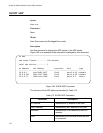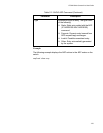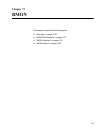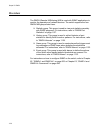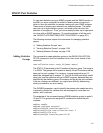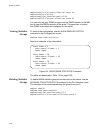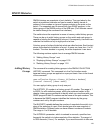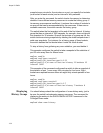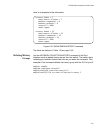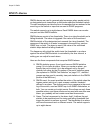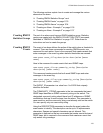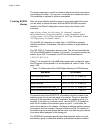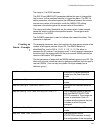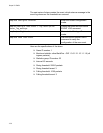
AT-9000 Switch Command Line User’s Guide
1129
RMON Histories
RMON histories are snapshots of port statistics. They are taken by the
switch at predefined intervals and can be used to identify trends or
patterns in the numbers or types of ingress packets on the ports on the
switch. The snapshots can be viewed with your SNMP program, in the
history group of the RMON portion of the MIB tree. (Port histories cannot
be viewed through the command line interface.)
The switch stores the snapshots in areas of memory called history groups.
There can be up to eight history groups on the switch and each group is
capable of storing the snapshots of one port. Consequently, the switch can
maintain the histories of up to eight ports at a time.
A history group is further divided into what are called buckets. Each bucket
stores one snapshot of statistics of a port. A group can have from 1 to 50
buckets. The more buckets in a group, the more snapshots it can store.
The following sections explain how to manage RMON histories:
“Adding History Groups” next
“Displaying History Groups” on page 1130
“Deleting History Groups” on page 1131
Adding History
Groups
The command for creating history groups is the RMON COLLECTION
HISTORY command. This command is in the Port Interface mode
because history groups are applied on a per-port basis. Here is the format
of the command:
rmon collection history
history_id
[buckets
buckets
]
[interval
interval
]
[owner
owner
]
You can apply a history group to only one port.
The HISTORY_ID number is a history group’s ID number. The range is 1
to 65535. As with statistics groups, which are explained earlier in this
chapter, history groups are easier to identify when you view them with your
SNMP program if their ID numbers are the same as the port numbers. This
is because the SNMP program identifies the histories by the group
numbers and not by the port numbers.
The BUCKETS variable defines the number of snapshots the switch is to
store of the statistics of a port. Each bucket can store one snapshot of
RMON statistics. Different ports can have different numbers of buckets.
The range is 1 to 50 buckets.
The INTERVAL parameter, which is entered in seconds, specifies how
frequently the switch is to take snapshots of the statistics. The range is 1
to 3600 seconds (1 hour). For example, if you want the switch to take one




